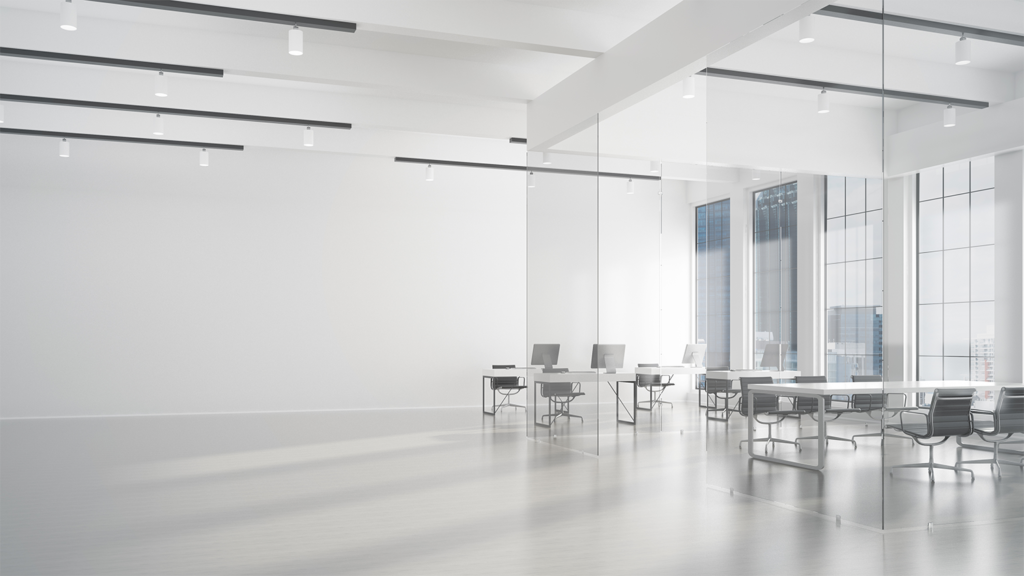
Investing in the office environment for the benefit of employees
A healthy, happy workforce is an integral part of any productive, successful business. Today, forward-thinking companies are increasingly investing in their workplace environment to boost the health and wellness of their people. Bureau Veritas outlines three steps businesses can take to improve conditions in the office for their employees.
In recent years, companies have been recognising the value of a more holistic view of employee well-being, and moving beyond defining wellness solely in terms of the presence or absence of illness and safety hazards.
Three factors lead workplace wellness trends
Employee productivity is at the heart of any thriving business. But for employees to be productive, they need a workplace environment conducive to their health and well-being.
Recent studies have shown that office design has a strong material impact on employee health, well-being and productivity. Several specific factors associated with a workplace’s physical environment have been proven to have a direct impact on employees’ well-being. Three in particular—indoor air quality, noise and acoustics, and natural lighting—are consistently cited as essential to contributing to a positive workplace environment.
Better air, better care
Most people spend a significant amount of time—90 per cent or more—indoors.[1] As a result, the quality of indoor air has a significant influence on their health and well-being. However, indoor settings often contain concentrations of pollutants that are two to five times higher than outdoor levels. Sources of indoor pollution can include cleaning and personal care products, central heating and cooling systems, and building materials and furnishings. Indoor pollution can trigger nausea, asthma, headaches, fatigue, respiratory irritation and allergies.[2]
The right ventilation and building care can significantly improve indoor air quality. Productivity improvements of eight–11 per cent are not uncommon as a result of better air quality.[3] Building Information Modeling (BIM) technology can assist in achieving optimal indoor air quality in the design, construction and management of buildings. For existing buildings, ventilation and air quality inspections can help businesses assess their current conditions and see where improvements can be made.
Noise at work: more than a nuisance?
Most workplace environments are noisy. Phones ringing, people chatting, fingers tapping on the keyboard and machines constantly printing can all grate on nerves. But noise is more than an annoyance: it can have adverse health effects, too. These effects can include cardiovascular issues and sleep disturbance, which contribute to increased fatigue, mood changes and other problems. Repeated exposure to high noise levels can also result in stress-related anxiety, nervousness, and reduced productivity.[4]
To help organisations best manage noise and acoustic hazards, the International Standards Organization released ISO 45001 and OHSAS 18001, internationally recognised standards for occupational health and safety management systems that include noise-reduction measures. Compliance with these standards will ensure a business is providing an optimal working environment.
Time to see the light
For many employees, daylight is the most-wanted natural feature in the workplace. And it’s not hard to see why: daylight helps regulate circadian rhythms – the daily cycles of waking and sleeping hours. When these rhythms are upset, people can experience stress, sleep deprivation, depression, bipolar disorder and seasonal affective disorder. In fact, one neuroscience study found that people seated by a window sleep 46 minutes longer on average compared to those who don’t.[5] And workplaces with adequate natural lighting noted up to 40 per cent higher productivity and sales. [6]
What’s more, people generally prefer to be surrounded by nature, which provides variation and sensory change. This phenomenon is called biophilia – the affinity of human beings for, and need to connect with, the natural world. A recent study found that those who worked in spaces with green or other natural features reported a 15 per cent higher level of well-being.[7]
Sustainable building can help drive better outcomes for employee wellness,
because the building principles involved often take into account elements of
biophilic design. Leadership in Energy and Environmental Design (LEED)—the
world’s leading green building rating systems—provide third-party verification
of a building’s environmentally friendly features. LEED assessors can evaluate
the environmental credentials of workplaces and provide support in optimising
building operation.
Bureau Veritas
Bureau Veritas is a Business-to-Business-to-Society company, committed to contributing their experience and expertise in health and safety to the pursuit of a better world. Through testing, inspection and certification services, Bureau Veritas partners with clients to meet their workplace health and safety needs and to improve the productivity and performance of their organisations. More broadly, Bureau Veritas participates through the partnership with clients in the shaping of a more socially responsible culture that includes workplace wellness.
[1] Indoor Air Quality: What are the Trends in Indoor Air Quality and Their Effects on Human Health?, United States Environmental Protection Agency, viewed 31st October 2019, <https://www.epa.gov/report-environment/indoor-air-quality#main-content>
[2] Ibid.
[3] Health, Wellbeing and Productivity in Offices: The Next Chapter for Green Building, World Green Building Council, p. 10, 2014, viewed 31st October 2019, <https://www.ukgbc.org/sites/default/files/Health%2520Wellbeing%2520and%2520Productivity%2520in%2520Offices%2520-%2520The%2520next%2520chapter%2520for%2520green%2520building%2520Full%2520Report_0.pdf>
[4] Noise Isn’t Just Annoying – It’s Bad for Your Health, WELL, 28th September 2017, viewed 31st October 2019, <https://resources.wellcertified.com/articles/noise-isnt-just-annoying-its-bad-for-your-health/>
[5] Indoor Air Quality: What are the Trends in Indoor Air Quality and Their Effects on Human Health?, United States Environmental Protection Agency, viewed 31st October 2019, <https://www.epa.gov/report-environment/indoor-air-quality#main-content>
[6] Buchanan, Ash, and Sayago, Juliana, Why Natural Light Matters in the Workplace, Eco-Business, 18th April 2016, viewed 31st October 2019, <https://www.eco-business.com/opinion/why-natural-light-matters-in-the-workplace/>
[7] Ibid.


Recent Comments